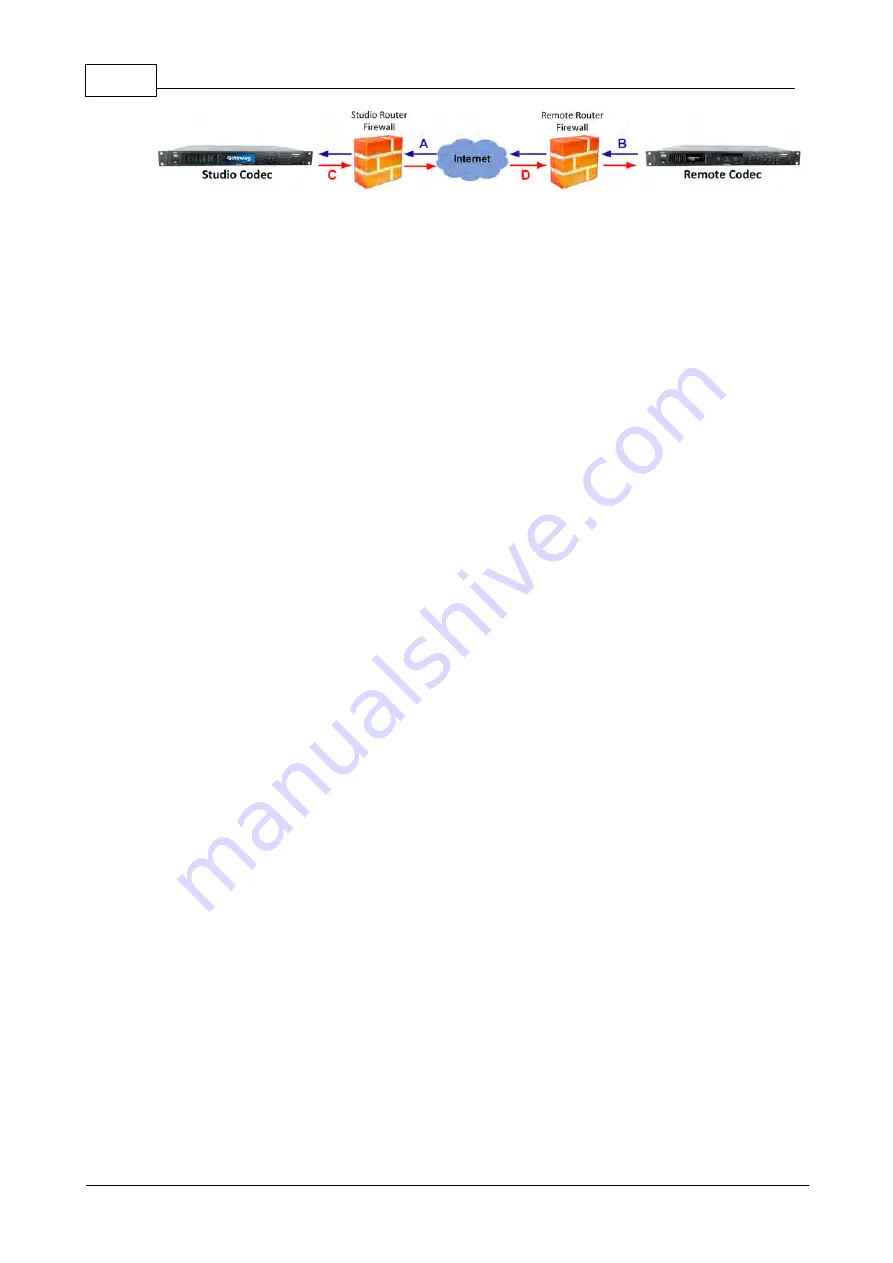
278
Gateway and Gateway 4 Manual v1.2
© Tieline Research Pty. Ltd. 2021
Diagnosing Port Blocking via the Remote Codec LQ
If you attach your Tieline codec at the remote site to a LAN with access to the internet you can
often dial and connect to the studio without any problem. It is less likely that a firewall will block
outgoing TCP and UDP ports. However, if there is a firewall at the remote site it may block
incoming data packets from the studio.
The principle is the same at the remote codec for diagnosing blocked ports. If the remote codec
Return
LQ reading is 01 then incoming audio from the studio codec is being blocked by a
firewall at either point C or D in the preceding diagram. If the remote codec
Send
LQ reading is
01 then the outgoing audio from the remote codec is being blocked by a firewall at either point A
or B in the preceding diagram.
Troubleshooting TCP Port Blocking
Error messages on the codec screen can help to diagnose TCP port blocking.
1.
"Connection Refused"
usually means that the firewall is configured correctly but the
codec is not using the expected port. For example, the firewall is set up to forward via
port 9002 but codec is 'listening' to port 10,000. “Connection Refused” is not normally
shown if the firewall is not configured correctly because a firewall will by design silently
drop any forwarding requests to ports that it doesn’t have open (see next point). Note:
"Connection Refused" will also be displayed if the Commander G3 or i-Mix G3 codec
you are calling is already connected.
2.
“Connection Timeout”
can mean one of two things:
·
The firewall is not configured correctly and the attempted codec connection is being
silently dropped, e.g. a remote codec is dialing to port 9002 but the studio firewall
port forwarding is not configured.
·
The UDP port is not port forwarded correctly. Tieline codecs send test data during
connection establishment to make sure that the audio path is configured correctly;
if this process fails then it will also result in a “Connection Timeout”.
How do I determine which end is blocking data flow?
Tieline test codec firewalls have the default Tieline TCP and UDP ports open. You can dial into
these test codecs (or other codecs you know are configured correctly) from your recently
configured studio and remote codecs and use the LQ readings to diagnose whether your studio
or remote codec firewall is blocking your data packets. If one codec connects ok and the other
one doesn't, then you will know which end is likely to be causing the problem. As an example:
1. Dial from site 1 to a Tieline test codec.
2. Dial from site 2 to Tieline test codec.
If both of these connect successfully then the “outbound” TCP path for session data is OK, and
the inbound UDP audio path is OK.
3. Dial to site 1 from a codec you know is configured correctly.
4. Dial to site 2 from a codec you know is configured correctly.
Содержание Tieline Gateway
Страница 33: ...33 Tieline Research Pty Ltd 2021 Gateway and Gateway 4 Manual v1 2 Home Screen Menus...
Страница 34: ...34 Gateway and Gateway 4 Manual v1 2 Tieline Research Pty Ltd 2021 Settings Menu Navigation...
Страница 183: ...183 Tieline Research Pty Ltd 2021 Gateway and Gateway 4 Manual v1 2...
Страница 283: ...283 Tieline Research Pty Ltd 2021 Gateway and Gateway 4 Manual v1 2...






























